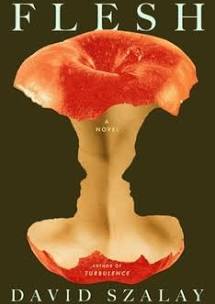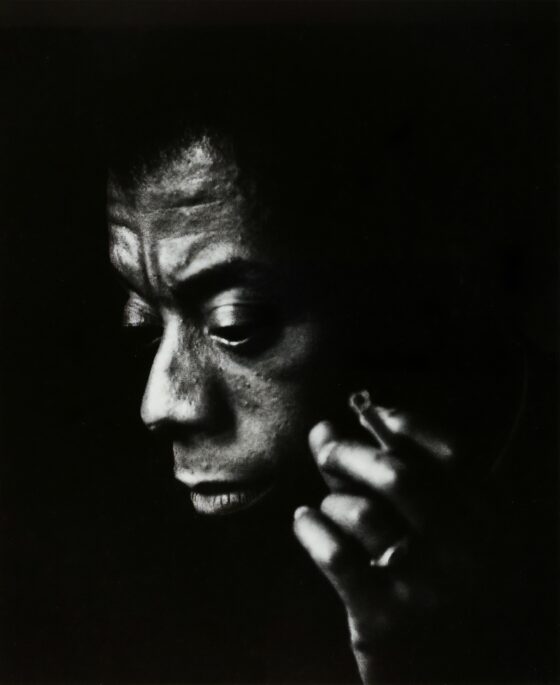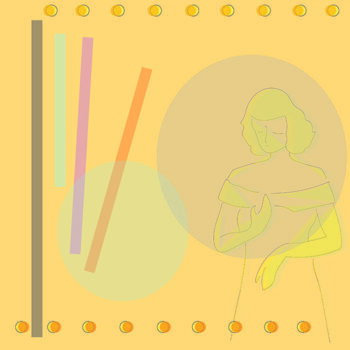
Vickie Lynn became a stripper by chance. She originally intended to sing in drag, taking her name from a blouse company in uptown Manhattan—“It’s Vicki Lynn’s pleated shirt classic, complete with French cuffs, in washable Silduka rayon crepe, and your choice of five dreamy colors!” a 1950 advertisement read. A fellow queen brought Lynn to an audition at the once-upon-a-time nightclub Moroccan Village, known for its gender impersonators. At the audition, they asked if she stripped, but before Lynn could open her mouth, her friend responded, “Greatest stripper ever.” So she went from there.
“It turned out that I was not great, I was the best,” she said later, in an interview with historian Joe Jeffreys. Lynn’s lithe limbs and slim figure translated well into striptease, which was not an all-nude scenario like it might be today but an iteration of burlesque.
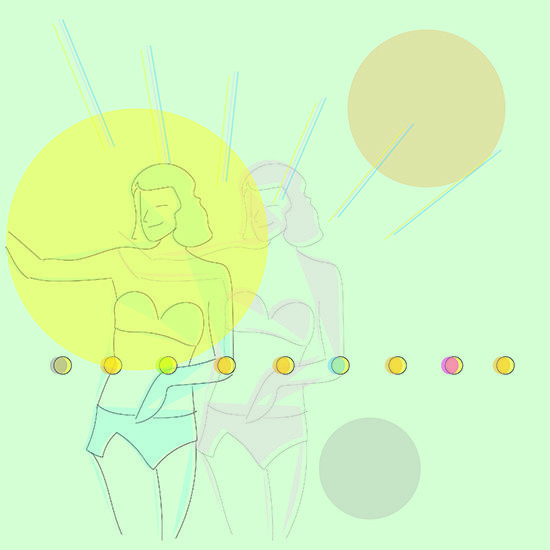
Today, mainstream media regularly covers drag, drag artists sell out esteemed venues, and people gather to cheer on their favorite drag artists weekly on stage or screen. And while drag still faces innumerable challenges from ignorant, homophobic lawmakers and their like-minded constituents, it took a long time to even get to this point.
For many, drag artists today hold the space of honored agents provocateurs, but this was not something Vickie Lynn saw in the approximately two decades of her performance career. Drag was looked down upon for decades, not just by mainstream straight culture but by queer culture as well. In fact, Lynn was annoyed but not surprised when, at one point in her career, she arrived at a gay orgy and was asked to leave because she was a drag artist.
This story begins a bit further back, however, with Prohibition, an event that put at the cultural forefront a taste for the taboo. Alongside it rose the Pansy Craze, which, in alignment with Prohibition’s verboten leanings, became a mainstream interest in all things queer, especially in performance. All of a sudden, Pansy performers—flamboyant men in dapper tuxedos who’d read audiences for filth, much to their delight—became all the rage, and their drag artist costars followed suit. Soon, anywhere there was a Pansy performer, there was a drag artist. It became one of the first times in American cultural memory that mainstream audiences associated drag, a long-beloved theatrical tradition, with queerness. “Lesbians and gay men also made [the Pansy Craze] happen by starting their own speakeasies and performing at clubs in the Village and Harlem, by organizing drag balls in the city’s ballrooms and by carrying themselves openly in the city’s streets and putting on ‘shows’ for the other customers at the city’s Automats, cafeterias, and speakeasies,” writes George Chauncey in his essential text Gay New York. “The fascination they provoked led entertainment entrepreneurs to put homosexuals on their own stages.”
But when the Great Depression forced a more conservative outlook to take over culture, out went Pansy performance and drag followed. Indeed, drag became as looked down on by both straight and queer audiences as it had once been beloved, and almost overnight. “The anti-gay reaction gained force in the early to mid-thirties as it became part of a more general reaction to the cultural experimentation of the Prohibition years and to the disruption of gender arrangements by the Depression,” Chauncey writes. “. . . gay men and lesbians began to seem less amusing than dangerous.” Many straight patrons now found it freakish, and many queer patrons railed against being associated with “people like them,” these drag artists who were seen as low-class, vulgar, abnormal.
Drag had to take on a new life to maintain audiences, hyping its own respectability to be palatable yet still alluring to straight crowds, who saw it as a novelty. Acts had to be exceedingly tasteful even when they were provocative, always recalling grand theatrical tradition dating back to antiquity. Quips were delivered in sparkling evening gowns, not a hair out of place. Male drag artists appeared in tuxedos, never casual attire. The goal was to create an elegant nightclub act that would still make the audience feel like they’d seen something delightfully naughty. This remained true throughout the 1950s.
The only places to see drag in New York in this period were run by the mafia or were touring companies from across the country. At mafia-run drag venues, drag artists worked as comics, dancers, singers, and even striptease or burlesque performers, always with a sophisticated sensibility overarching any mischief. As John Strausbaugh writes in his 2013 book The Village, the 1950s had a reputation for conservative conformity, but a strong rebellious undercurrent ran underneath—this is how we got the Beats, the Brandos, and the counterculture, after all. Drag artists became a slice of counterculture offered up to mainstream audiences the same way Rebel Without a Cause and similar “teensploitation” films showcased disaffected youth; not unlike the Pansy Craze, it was a world straight audiences could peek into yet still have the power to leave immediately, something that similarly became necessary to offer in hopes of keeping drag alive.
These were the sociocultural forces at work as Vickie Lynn began to work New York’s downtown nightclubs. By 1949, Lynn would take her act to Club 181, another nightclub known for its gender impersonators and run by the notorious Genovese crime family. She stayed until it closed in the early 1950s, when she went to their new Club 82, which later became one of the longest-running drag venues in New York City. There, she was billed in the program as “living proof that you can win by losing—losing most of what you’re wearing. . . .” But, as with other drag artists, there was always a language of assurance that would follow. The striptease, as with the gender impersonation, was billed as an act of elegance, finesse, and illusion. “Of course it must be done with skill, artistry, and the 1,001 magical tricks that made the Arabian Nights nights to remember . . .” the 82’s program wrote. With its white tablecloths and steak dinners, the club was clarifying that it was not, in other words, some cheap burlesque house, which was considered low on the spectrum of entertainment then, even lower than drag. According to historian Joe E. Jeffreys, striptease was not considered unusual nightclub fare in the 1950s. To the contrary, it was practically expected, but only in its most graceful form.
And Lynn charmed audiences from all walks of life. One of those audience members in the early 1950s was Irving Klaw, who would make a career of pinup and fetish photography in a moment when the two were still sold in brown wrapping paper; among his earliest finds would be queen of the pinup universe, Bettie Page. Photographer and set designer Jack Bradley brought Klaw to the Club 82 in 1953—Klaw had been hoping to photograph some of the performers for his business, Movie Star News. Klaw developed a whole section for “Female Impersonators” in his business, marking any picture designating their gender-bending presentation with an “FI” label. Some of the 82’s performers obliged, Lynn included.
Taken with her appearance, Klaw included her in his 1954 burlesque film Varietease. Released in January of that year, Varietease has Lynn appear in a café dressed as a man wearing a suit, sitting with a female dancer in a black sequin gown, who briefly performs a sexy dance for the camera. With flat delivery, Lynn offers a challenge to the dancer: “You know, if I was a woman, I could do a dance that would hold any man.” And Lynn certainly delivers, leaving the set to don another black sequin gown and strip out of it in a hip-swiveling, cheesecake, legs-for-days routine that leaves her opponent in the dust. Then she sits down, removes her wig, and lights a cigar.
Later, Klaw called on Lynn for his next burlesque film, 1955’s Teaserama. In her own number, introduced by a scantily clad Bettie Page, Lynn parades in front of silky curtains in an evening gown, slowly removing her ensemble piece by piece until she’s left with a fringed skirt, stockings with a scintillating backseam, high heels, and strapless bra . . . which she peels away to reveal a flat chest, followed by the removal of her wig with a giant grin. It’s quite possible that Lynn was one of the first female impersonators allowed by the New York State Censor Board to expose their chest on screen to prove they were male. She’d perform a similar act at the 82.
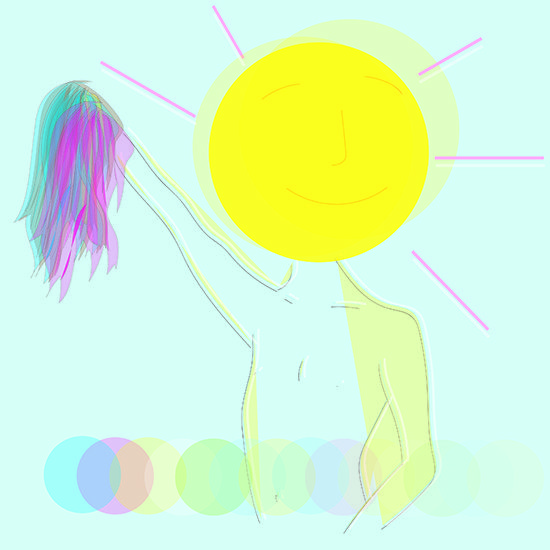
While there were many drag artists in Lynn’s era who specialized in striptease, Lynn is among the few who were ever captured on screen—one of the few drag artists at all, really, and in color, no less. Another is Adrian, a Club 82 star in the short Salome and the Dance of the Seven Veils, directed by Avery Willard, who made many films featuring drag artists. It wasn’t common practice to film a drag performance, especially when being openly gay meant you’d lose everything—your career, your home, your life—and being in drag had its own verboten nature. While audiences would have been no stranger to comedic drag ranging from the likes of everyone from Milton Berle to Bugs Bunny, to see an actual gay man on screen performing as a drag artist was not just distinctly unusual—with the provisions of 1934’s Hays Code, it was illegal until the Code’s abandonment in 1968.
Throughout her career, Lynn was proud of her work despite prevailing opinion. She believed the gay men who looked down on her were jealous, she said later, because she felt she could live a life exactly as she wanted while others had to hide. Later, Lynn became the first cover girl for Klaw’s Female Impersonators on Parade magazine. Released in 1960, the magazine was published by his company, Nutrix, and had a soft fetish edge—according to Jeffreys, Klaw undoubtedly knew what he could and could not send through the mail and featured both drag artists and cross-dressers.
Today, though, Lynn’s performances live beyond the scope of their original intention—something saucy and stunning onscreen—and have become historical artifacts. Looking at Lynn’s stripteases now, they seem almost prim and tame in comparison to what one might come across in pop culture today. Sex of any kind was not yet a regular part of visual culture—pornography was still quite literally sold under the counter—let alone coupled with gender nonconformity. But in Lynn’s case, the “tease” was the tantalizing part, both in Varietease and Teaserama performances as well as on stage at the 82.
In 2024, independent art film distributor Kino Lorber launched a project to restore Varietease and Teaserama, meaning the world will be able to see anew one of the comparatively few instances of drag ever captured on film, starring none other than Lynn herself. And yet, even on Kino Lorber’s website, Lynn’s not listed in the top cast of either film. This is unfortunately too often the case for queer figures of Vickie’s era. But we get to remember her because, well, she’s right there on film, her name and all. She’s twirling in swaths of fabric, glittering jewels, and cheeky lingerie, but always with sophistication.
“You never even said anything dirty, you just hinted at it,” Lynn recounted to Jeffreys in her interview: “I remember, like how many nights, my G-string would be just one millimeter off [and] the crack of my butt would be showing and I could tell because the spotlight would go up to my waist. That’s how daring it was. You didn’t dare do or show anything. Beautifully covered and beautifully dressed, everything was done in such good taste.”
***
Rumpus original art by Dolan Morgan



